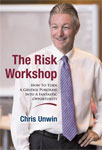Giving you the right track to run on
CHRISISMS
A fortnightly pearl of wisdom to fast track your success
CHRISISM #8 - The Importance of Terminology
20 January 2016

I’m sure you are already aware that it is human nature to resist commitment, especially to time or money – which is a bit inconvenient for us, isn’t it, because when we are looking to make an appointment with someone we are looking for a commitment of their time and when we are looking to do business with someone we are looking for a commitment of their money!
The point to grasp here is that, if we give people an opportunity to switch off and say "No!" then they will take it, and more often than not we are unwittingly giving them this opportunity, and often early on in the piece, with the terminology we are using when conversing with them. Typically we don’t realise the negative perception this terminology is creating in the mind of our client - usually because it is everyday terminology for us, but we need to realise that perception is reality in the mind of the person doing the perceiving, so it really doesn’t matter what we think. If a negative perception has been planted in the client’s head, then it’s "game over".
So what are some examples of words and phrases we use with clients day in day out that are doing so much damage? Below are some examples of words and phrases that I strongly recommend you stop using with clients as well as some alternatives you should replace them with.
DO NOT USE
|
USE |
| INSURANCE |
PROTECTION |
| INSURANCES |
PERSONAL PROTECTION PACKAGE |
DISABILITY
|
ILLNESS OR ACCIDENT |
| INCOME PROTECTION (as a concept) |
INCOME REPLACEMENT |
NEEDS ANALYSIS
|
WANTS ANALYSIS
|
I would expect that most of the terms on the left are fairly self explanatory, but if you want to better understand the power of the terms on the right, then you’ll have to come to one of my workshops! Maybe you will get a better idea of the difference between a “needs analysis” and a "wants analysis" in my next CHRISISM!
|

|
The Risk Workshop by Chris Unwin
Are you a financial adviser who would like all of your clients to have appropriate types and levels of personal protection? But perhaps you feel you need a more structured and client friendly engagement process?
|





